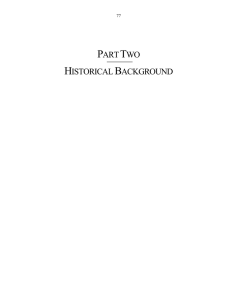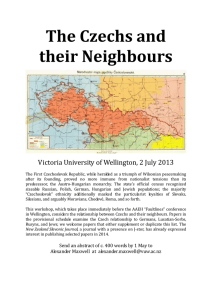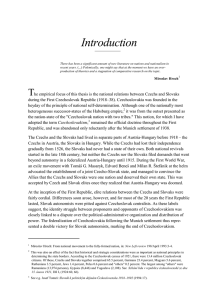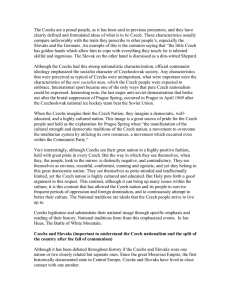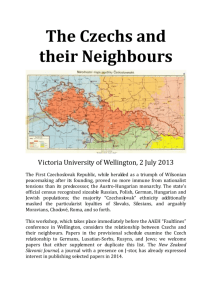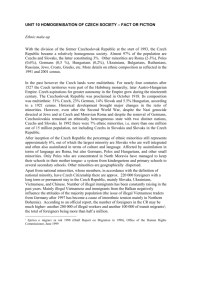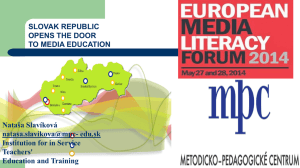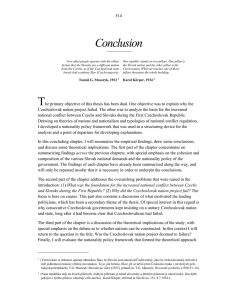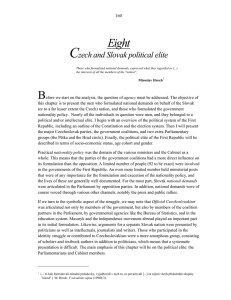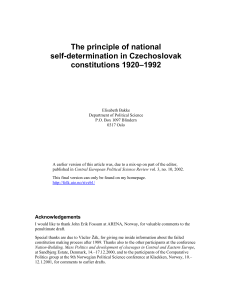P T A
advertisement
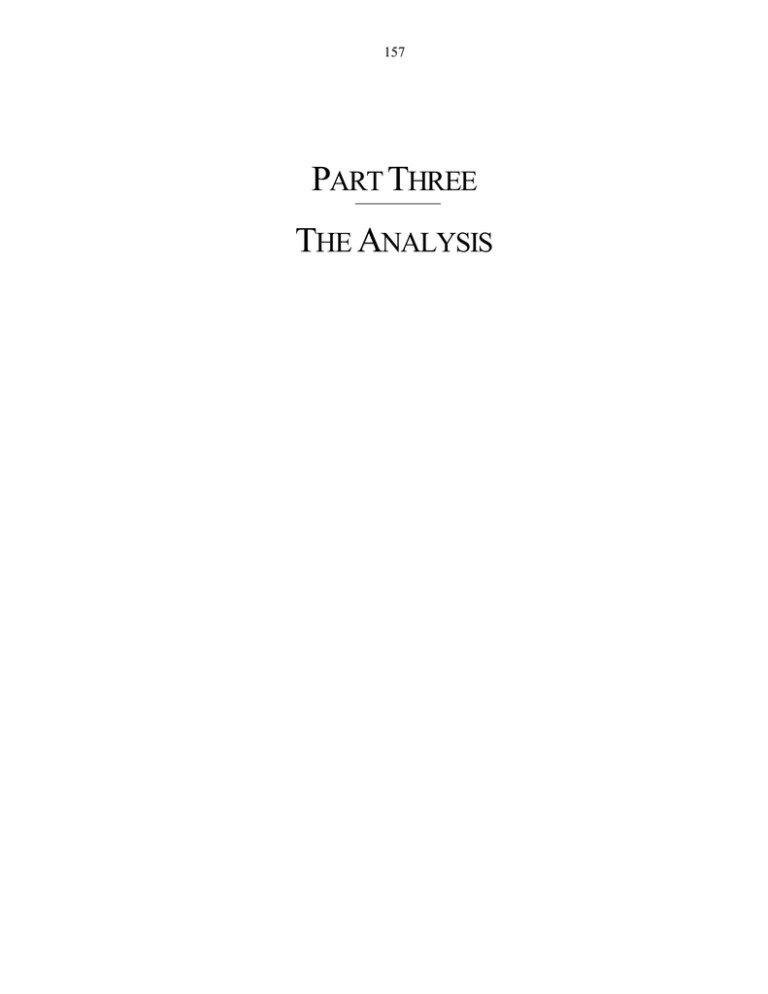
157 PART THREE THE ANALYSIS 158 Introduction Czechoslovakia is a renewal of the former Czech (and Great Moravian) state (…) Czechs and Slovaks are one nation and have one language. 1 Tomáš G. Masaryk, 1923 N ow that I have provided the theoretical framework and the historical context for the analysis, it is time to turn to the primary objective of the study, which is to explain why the Czechoslovak nation project failed, and why the national conflict level between the Czechs and Slovaks increased during the First Republic. A secondary objective is to shed light on what motivated the leading politicians on either side, with special focus on why consecutive Czechoslovak governments kept insisting on a unitary Czechoslovak nation and state. The nationality policy framework that was developed in Chapter Four is used as a structuring device for the remainder of the narrative. I first introduced a divide between a symbolic and a practical level. At both levels, national demands are met with certain nationality policies, which may be accommodating, repressive or neutral (non-discrimination, equality on an individual basis regardless of nationality). The practical level was then subdivided into a political, a cultural and an economic dimension. In the First Republic, there was a struggle at a symbolic level about national identity between Czech and Slovak proponents of Czechoslovakism and Slovak autonomists, whereas among Czechs there was hardly any opposition to Czechoslovakism.2 It has been argued that in the inter-war era the term Čechoslovakismus was used mainly by those who were opposed to it, and then in a pejorative sense.3 As we shall see, this is not entirely true, and no such thing is implied on my part. The analysis has been divided in two: Chapter Nine seeks to establish to what extent Czechoslovakism was advocated in various official documents, statistics, school textbooks, etc., including wartime documents. Inevitably, the chapter also addresses the contents of the proposed Czechoslovak national identity. Since Masaryk's most important contribution was to lay the foundation for the Czechoslovakist ideology during the First World War, I have chosen to confine the presentation of his views mostly to this chapter. 1 (Československo je obnovením bývalého českého (a velkomoravského) státu; [...]Češi a Slováci jsou jeden národ a mají jeden jazyk.) From Slované po válce (1923), excerpt in T.G. Masaryk: Slovanské problémy (1928:13). 2 Instead there was an internal debate about the contents of Czech identity and the meaning of Czech history. I have decided to leave this out, because it had very little bearing on Czecho-Slovak relations. A collection of contributions to the debate up to 1939 may be found in Miloš Havelka (ed.): Spor o smysl českých dějin (1995). 3 See Jan Rychlík: Slovensko-české vztahy z české perspektivy, in Idea Československa a střední Evropa (1994:112). 159 I have tried to distinguish between this officially endorsed Czechoslovakism and the identity struggle that was played out in public. This is the topic of Chapter Ten, where the primary objective is to establish to what extent the Czechoslovakist ideology included elements that may have worked against its acceptance. The focus is on how the two sides argued in order to substantiate their respective nation projects, with special emphasis on how they interpreted history. This chapter also includes a presentation of Slovak symbolic demands in the Parliament, and the main lines of argument in the Parliament. Part of the reason why the Czechoslovak nation project failed is indicated already in Chapter Ten. Before turning to Official Czechoslovakism, however, I need to address the question of agency. This is done in Chapter Eight. Who were the men (and they were only men) who voiced national demands on behalf of the Slovaks, and who were the members of the government coalition that formulated the nationality policies of the First Republic? In this context, I have found it necessary to give an overview of the political system of the first republic, including major Czechoslovak parties and government coalitions. At a practical level, the political lines of cleavage were less clear-cut. National demands were filed on behalf of the Slovaks (and to a much lesser extent the Czechs), not only by Slovak autonomists, but occasionally also by Slovak members of the government parties. The analysis of the dynamics between national demands and nationality policy is divided into three, according to dimension. Chapter Eleven covers the cultural dimension, with special emphasis on how the most salient demands were related to the contents of Slovak nationhood; Chapter Twelve covers the economic dimension and Chapter Thirteen covers the political dimension. There is one exception: Slovak representation in the Parliament and government coalitions will be treated in Chapter Eight, since this issue was intimately related to the character of the political system. Grievances concerning representation and civic and individual political rights are presented in Chapter Thirteen, but the main focus of this chapter is on the admittedly highly unequal "tug-of-war" between Czechoslovak centralists and Slovak autonomists over the distribution of power and the political-administrative organization of the state. Central questions that are asked are whether the composition of the national demands changed over time, to what extent the various demands were accommodated, why/why not, and to what extent there was a reality behind the demands in the sense that they corresponded to nationally relevant conflicts. In Chapter Twelve an additional question is posed: to what extent did economic complaints concern issues outside government control? The primary objective of Chapters Eleven through Thirteen is to identify the foundations of the heightened level of national conflict between Czechs and Slovaks during the first republic. The matter of what motivated the politicians on either side is addressed – partly in Chapter Nine, partly in Chapter Ten, and partly through an analysis of the main arguments in favor of and against autonomy in Chapter Thirteen.
